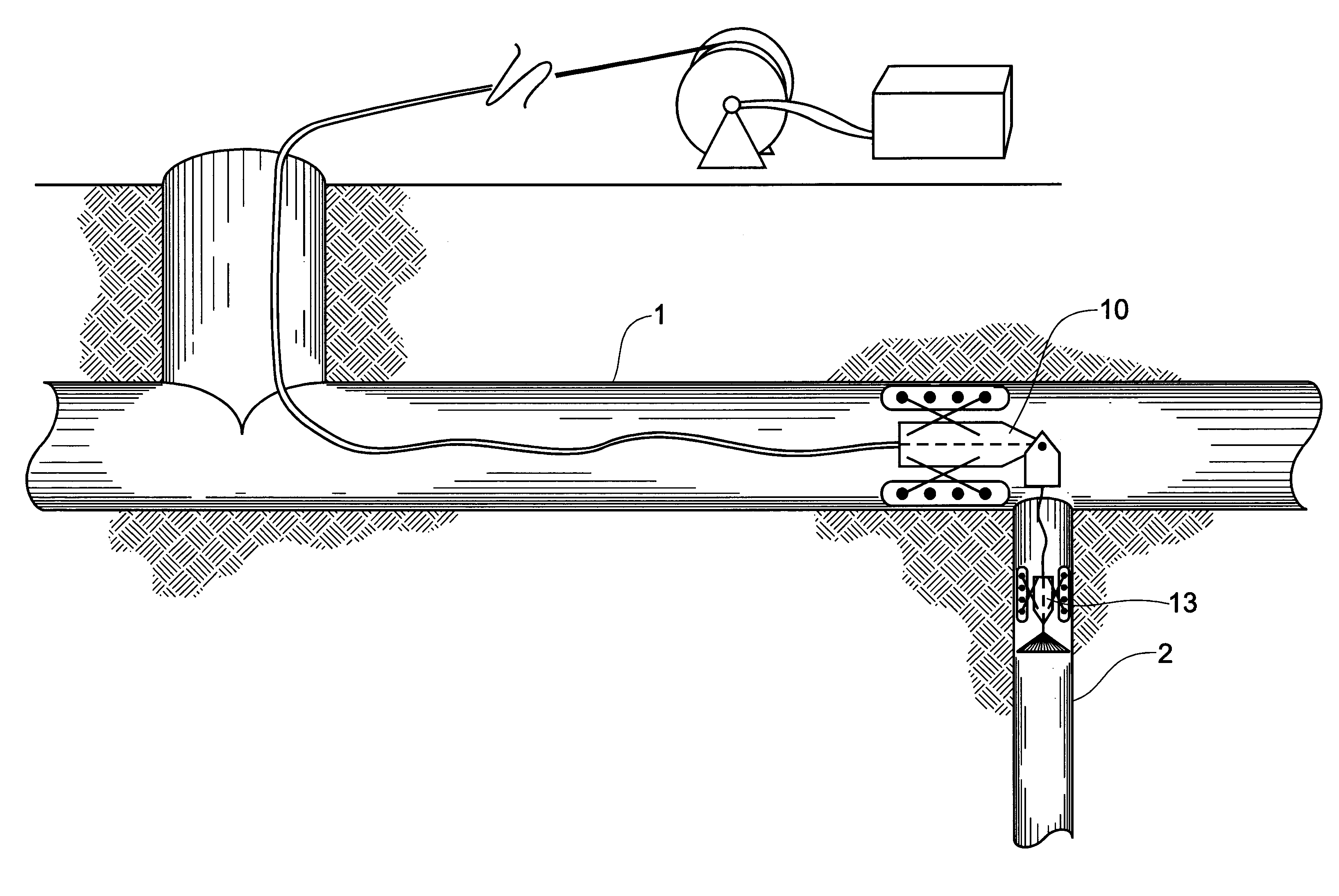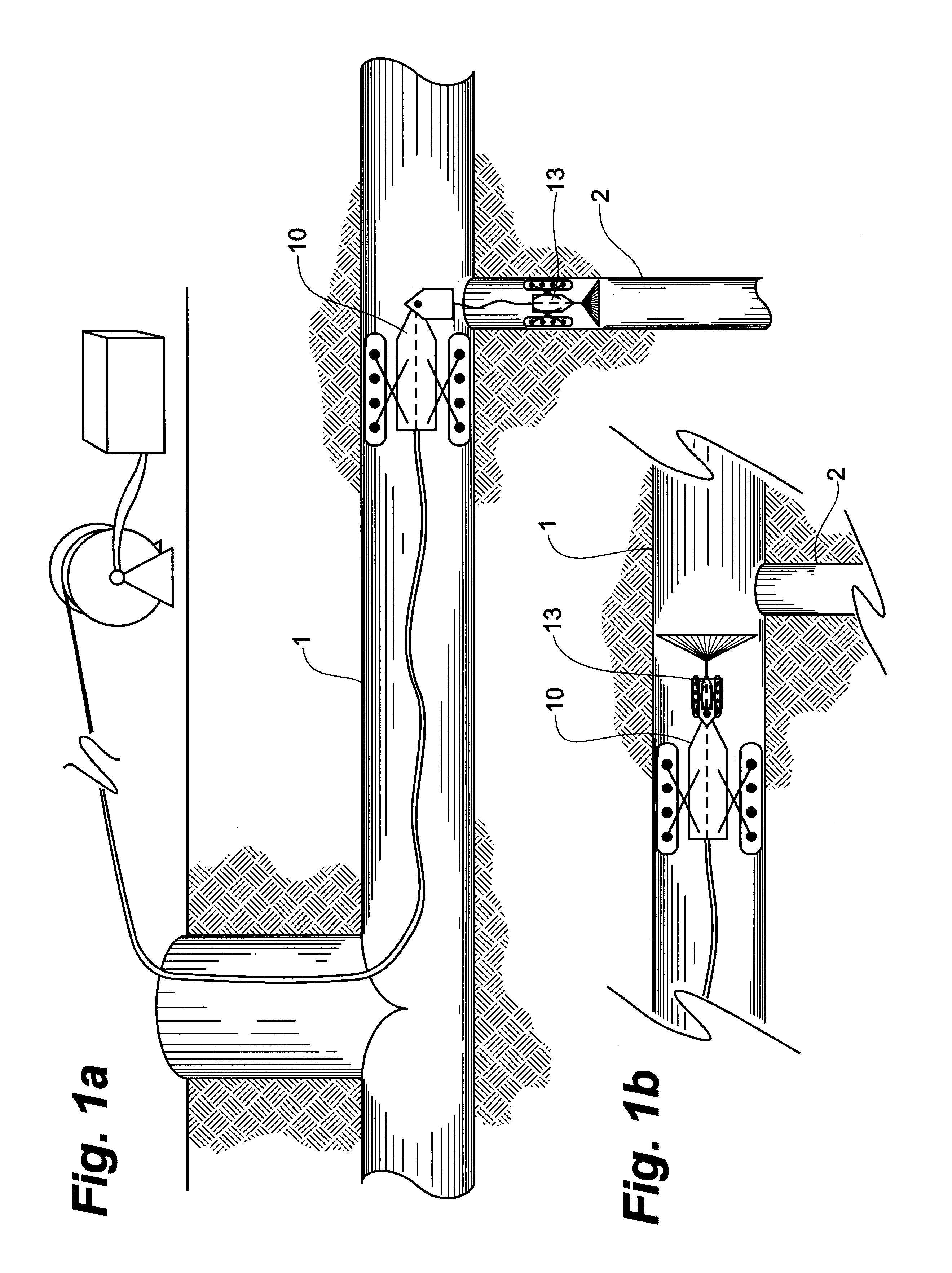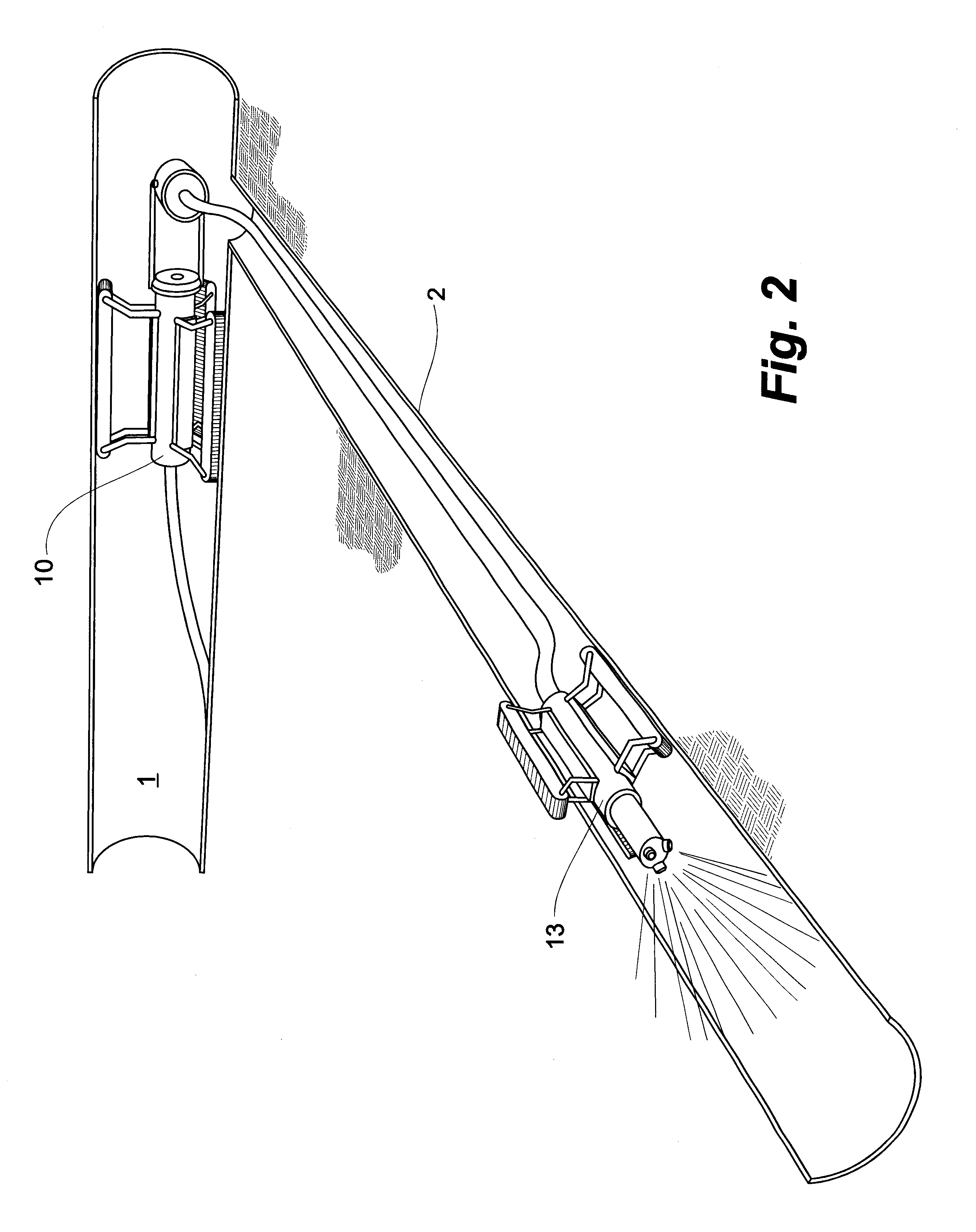Robotic apparatus and method for treatment of conduits
- Summary
- Abstract
- Description
- Claims
- Application Information
AI Technical Summary
Benefits of technology
Problems solved by technology
Method used
Image
Examples
Embodiment Construction
[0047]Having reference to FIGS. 1-3, in a first embodiment, a system of conduits comprising one or more main conduits 1 and one or more sub-conduits 2, is navigated by a robotic vehicle or a mule 10. The mule 10 is capable of negotiating the conduits for delivering and deploying a series of devices or tools, such as polyurethane coating spray nozzles, to remote locations in the conduit or sub-conduits. The mule 10 is remote controlled from surface and is provided with data and control communications, a power source and consumables as required. Another robotic vehicle or mouse 13 is optionally provided which is particularly useful in traversing and treating sub-conduits. As shown in FIG. 3, at surface, a control vehicle 3 is typically provided for delivering the mule 10, the mouse 13 and the associated controls to the site of the conduits 1 and sub-conduits 2. The control vehicle 3 comprises: power sources such as electrical, hydraulics, and pneumatics; remote computer controls, reel...
PUM
| Property | Measurement | Unit |
|---|---|---|
| Diameter | aaaaa | aaaaa |
| Flexibility | aaaaa | aaaaa |
| Electrical conductor | aaaaa | aaaaa |
Abstract
Description
Claims
Application Information
 Login to View More
Login to View More - R&D
- Intellectual Property
- Life Sciences
- Materials
- Tech Scout
- Unparalleled Data Quality
- Higher Quality Content
- 60% Fewer Hallucinations
Browse by: Latest US Patents, China's latest patents, Technical Efficacy Thesaurus, Application Domain, Technology Topic, Popular Technical Reports.
© 2025 PatSnap. All rights reserved.Legal|Privacy policy|Modern Slavery Act Transparency Statement|Sitemap|About US| Contact US: help@patsnap.com



